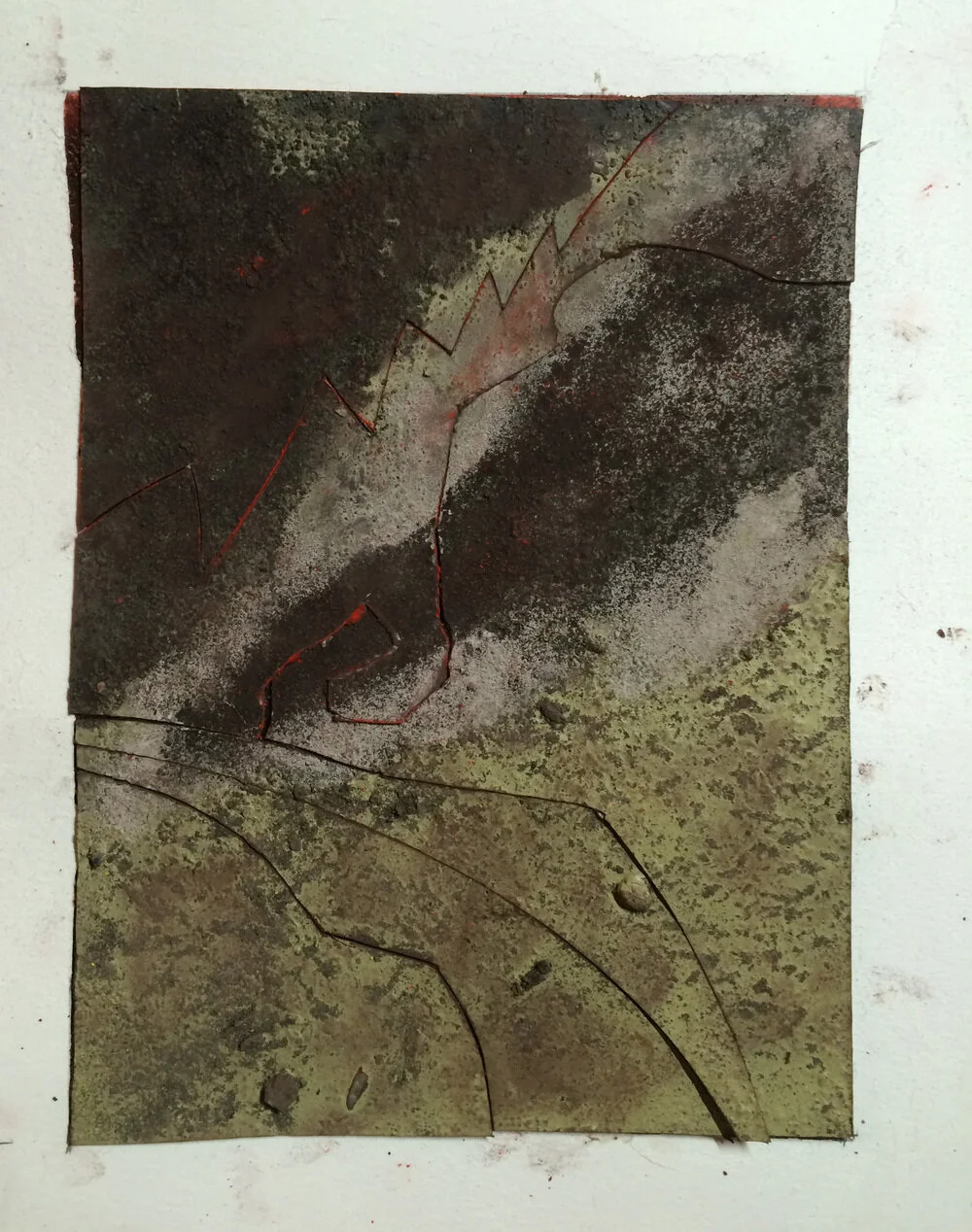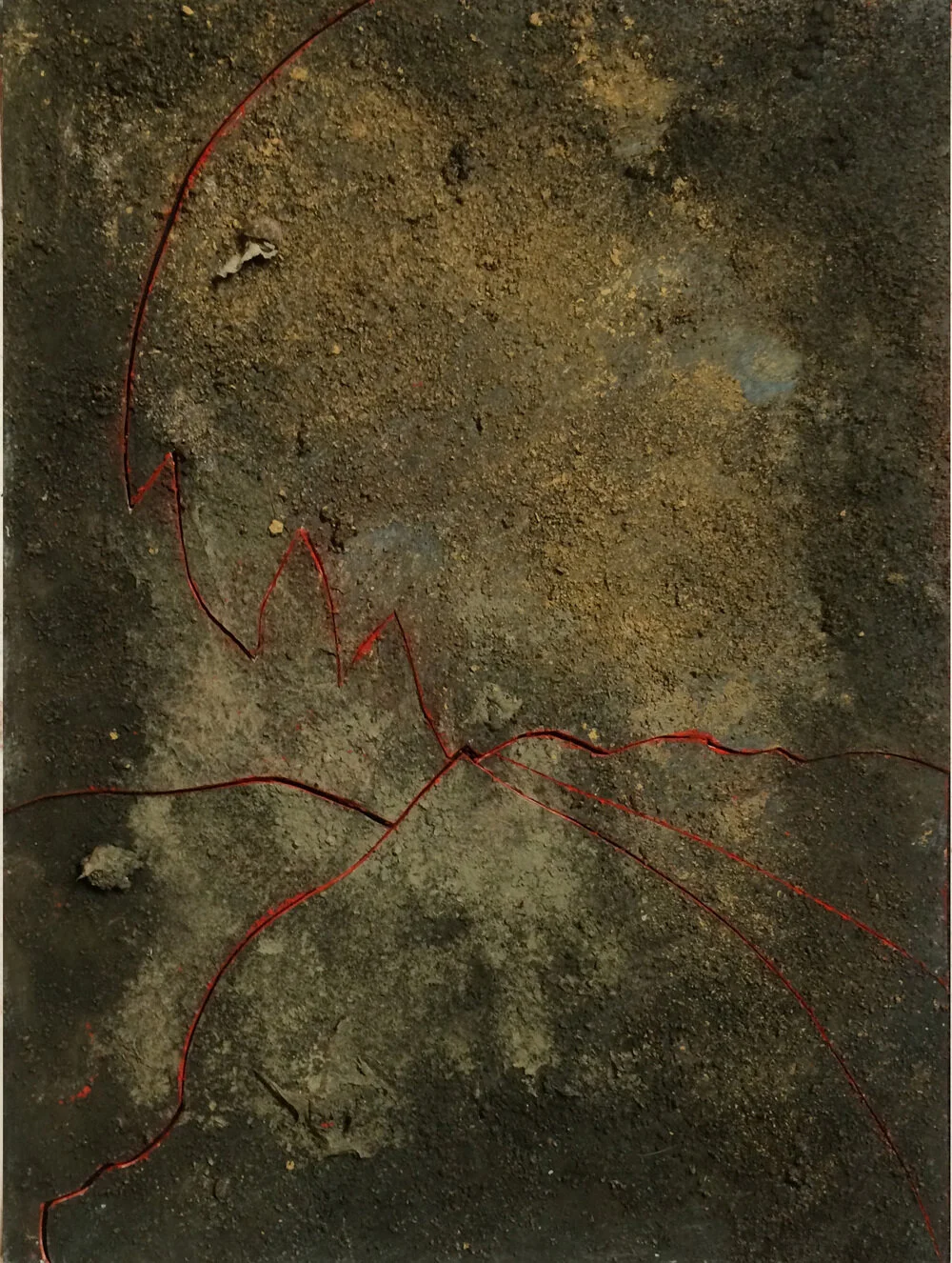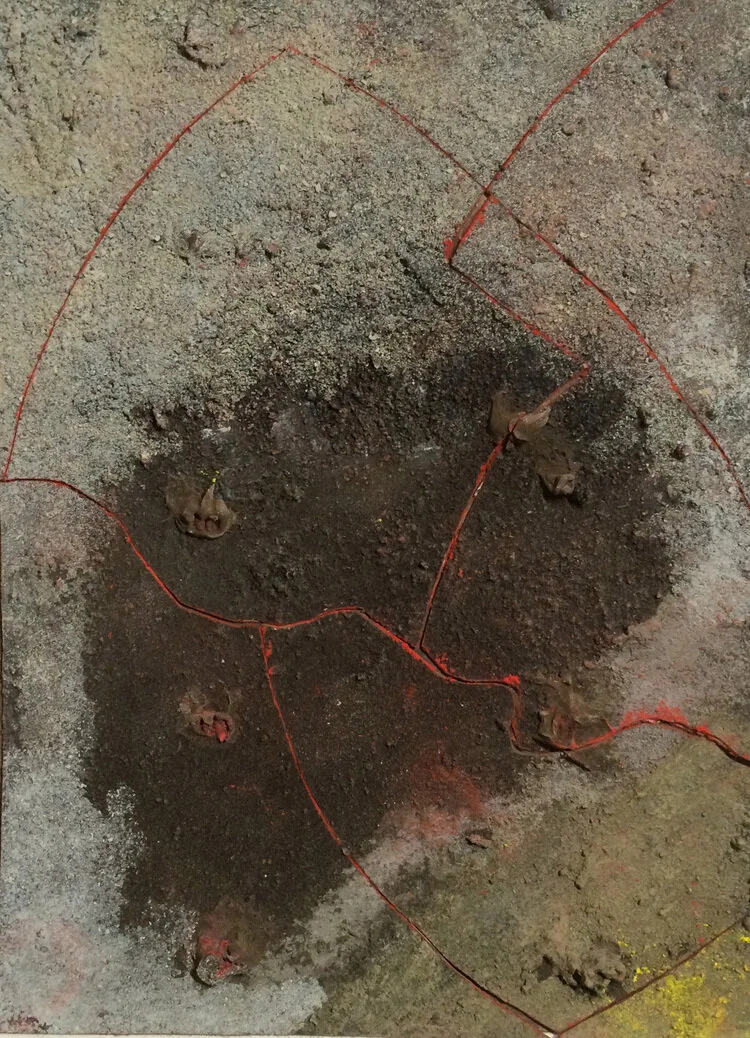MOUNT ARABIA
When continents collide far below, enormous amounts of pressure build up as rocks of all types pile on one another, subject to enormous lateral forces. These pressures melt, crush, fold, and pile rock. Some rock becomes liquid. Some rock become something between a solid and a fluid state.
It’s at Mount Arabia where you see the indelible impression of these forces, of these states not clearly defined. Mount Arabia is in Georgia, outside of Atlanta. It’s one of three monadnocks - large swaths of rock amid landscapes of forest and anthropocene geographies in the area, the others being Panola Mountain and Stone Mountain with its infamous outsized carving of confederate generals.
There are a handful of places to access the landscape of rock that is Mount Arabia. Driving down a highway that looks like any other I pull into a dirt and gravel drive. There a few parking spots, and upon exiting, a gazebo typical of a state park with maps and informational posters about the site. Once I pass this threshold I am presented with an ancient holy landscape. Fiercely, over the course of many millennia, rock (majority gneiss with some pockets of granite) has welled up from deep within the earth, exposing the earth’s hard skeleton through the time-locked skin of soil, flora and fauna. It’s here as if to say that the time scale of all we typically refer to as living - the grass, the trees, the animals, the insects, the flowers, the fungi, the people - is a geological sneeze, a rock’s breath taken. It’s’ majestically matter-of-fact. The scariest aspects of the sublime are here but only if one stops to recognize it. The power that makes me feel so small is underneath my feet and moving in slow motion, living and dying over thousands and thousands of years. How very powerful the earth is. How we’re irrelevant to its lifecycle.
In the rock you can see the marks of literally endless contortions of the crystalline structures and they have been pushed, pulled, folded, melted, and otherwise subjected to tides of tectonic magnitude. The visual result is striations, chevrons, folded lines, triangles, squares, in grays, oranges, whites, and browns.
In this meadow of twinkling rock there are shallow depressions, some with water and all with blooming things. Lichen has secreted digestive enzymes on the rock, dissolving tiny portions of it for food, creating microscopic cracks that organic material is washed into, making more food for lichen, fungi, and eventually plants growing in shallow soil. Diamorpha smallii is a brilliant red plant in winter and then blooms white in spring among swaths of green and purple lichen and moss. So these shallow depressions are delicate gardens existing on the dense planes.
These paintings are a meditation on place. Creating them is taking a walk on the surface of Mount Arabia, a unique place on the planet and a favorite of mine. The paintings are a catalyst to feel the sublime, and an act of documenting, a subjective way of knowing the mountain.













